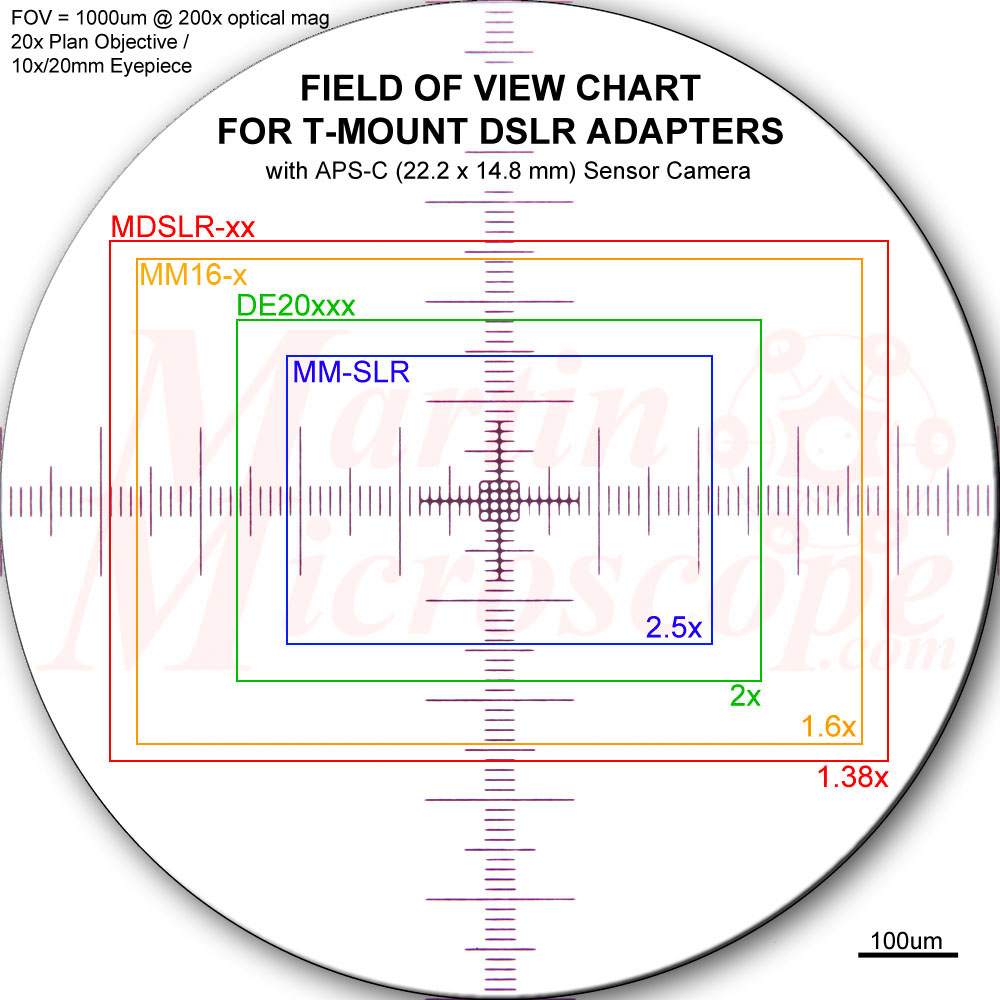Field of View (FOV)
When dealing with digital camera images, a common question is, “What’s the magnification of the captured image?” People are often frustrated when we tell them that the digital image’s magnification is so variable as to be almost meaningless. This is because of variability of computer screen sizes and resolution settings, print sizes, etc. What is meaningful and unchanging is the Field of View (FOV). Our goal is normally to maximize the FOV that the camera captures, but with no vignetting. This means matching the camera’s sensor size to the appropriate microscope adapter. We sell several types of T-mount adapters in magnifications of 2.5x, 2x, 1.6x and 1.38x. For a full frame DSLR camera, the MM-SLR 2.5x adapter is the only one we sell that will not cause vignetting. For the popular APS-C sensor size (sometimes called “cropped sensor”) cameras, any of our adapters will work, but we normally recommend getting the one with the widest field of view available for the microscope that is to be used. This means if we have an MDSLR-xx 1.38x type adapter for your microscope, that’s the one we recommend (again, assuming an APS-C sensor camera). However, for some microscopes, and particularly for those with ISO 38mm photoports, our MM16-x 1.6x adapter is the best choice. Other considerations could be that the adapter needs to work with multiple types of microscopes, in which case the MM16-C plus a simple 1x C-mount is often the best choice. The chart below shows the fields of view that each type of adapter will capture given a circular optical field of 1000 microns which is typical at 200x optical magnification.


